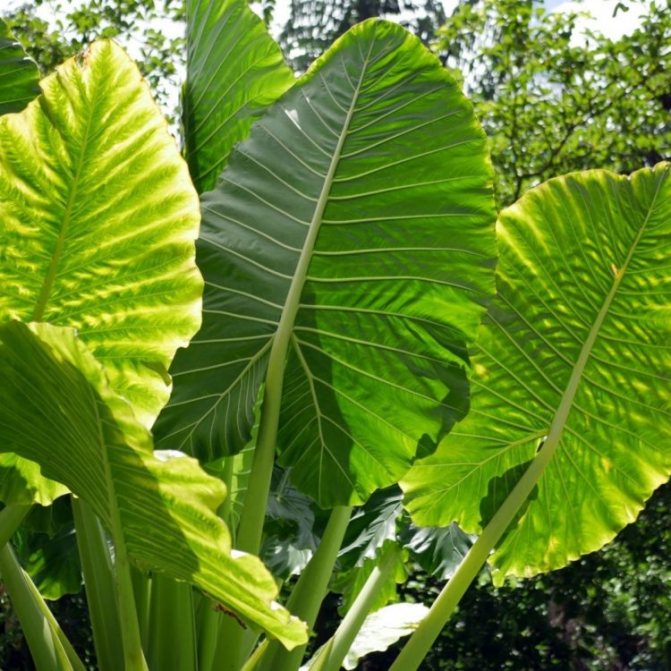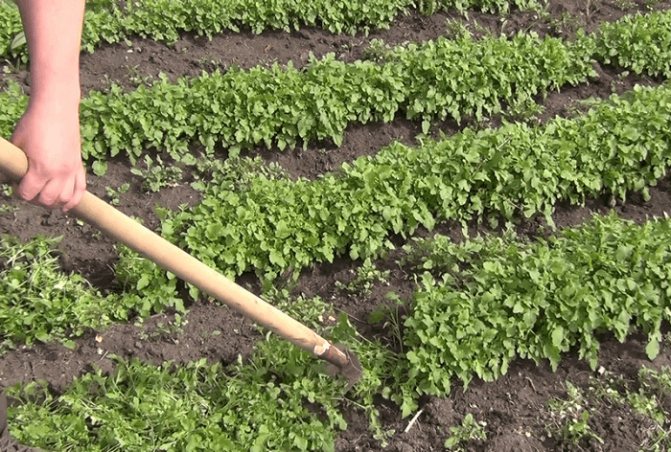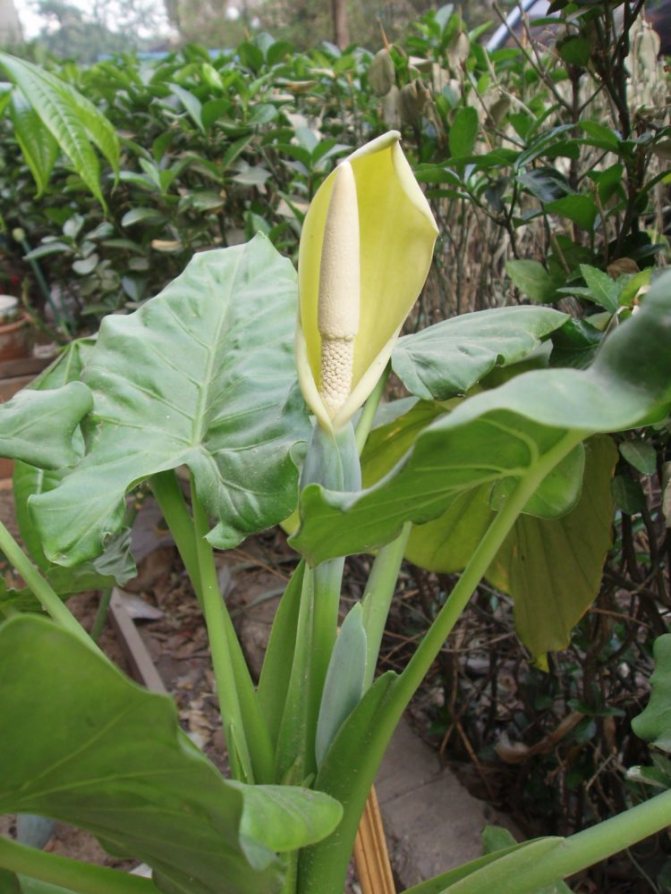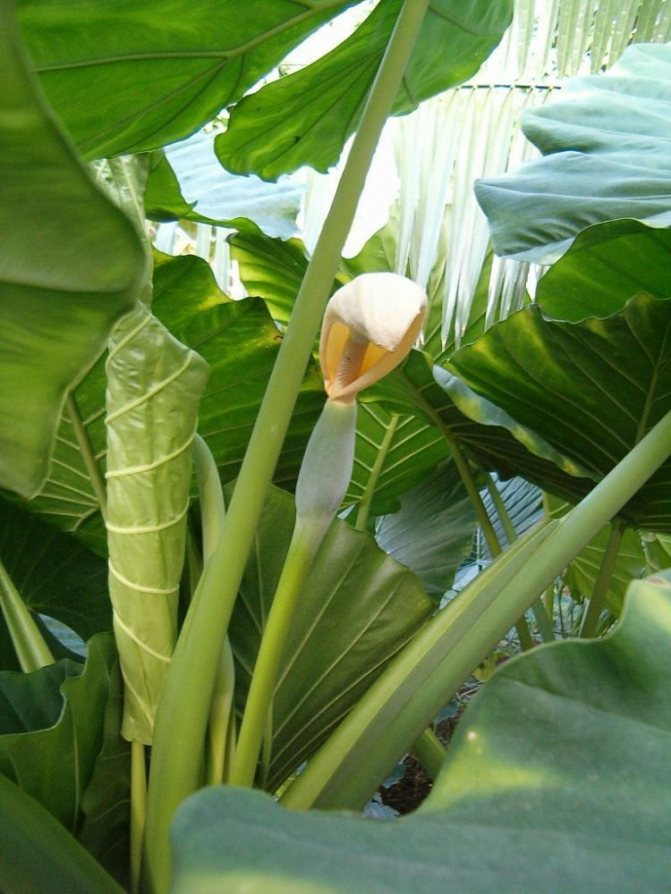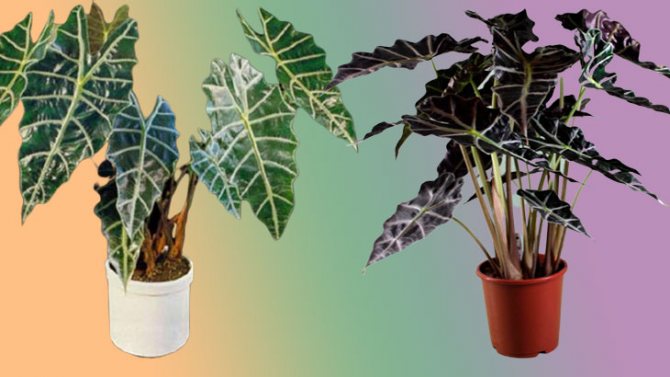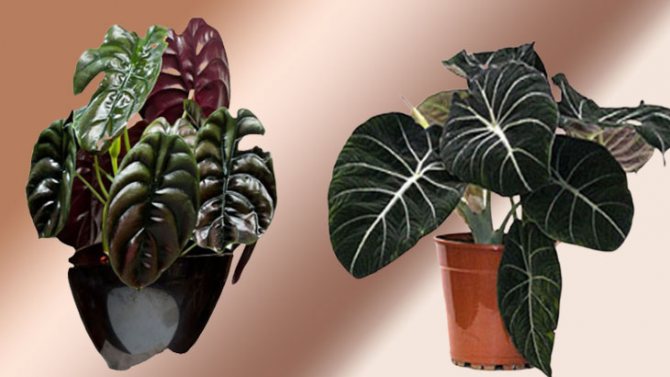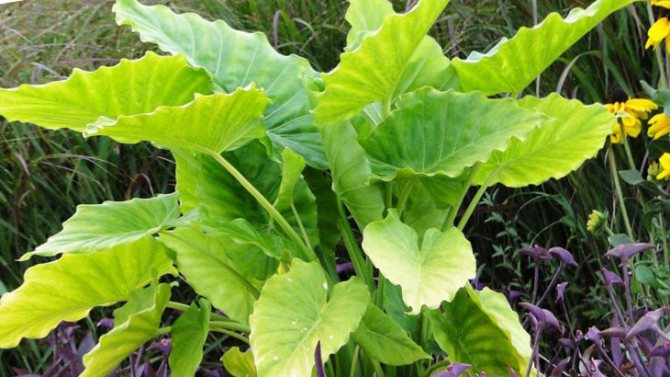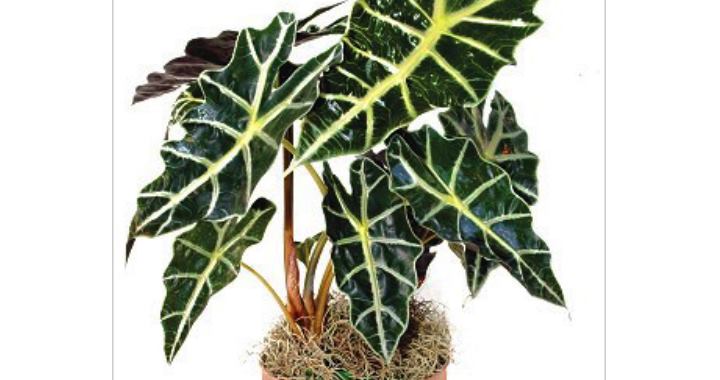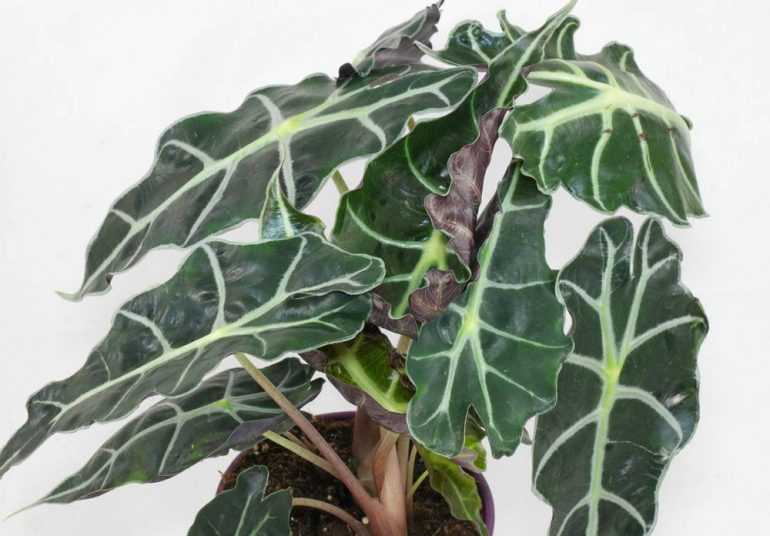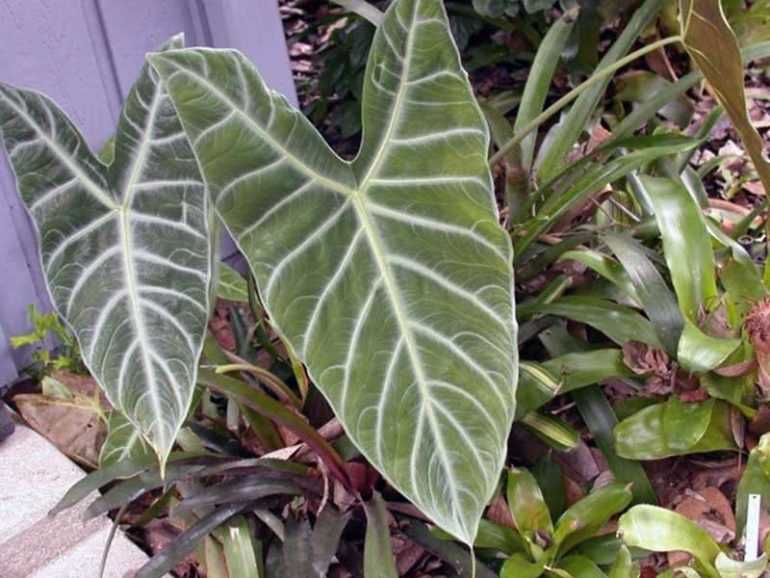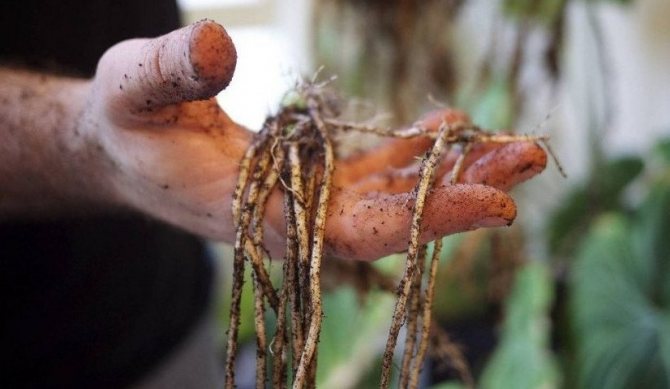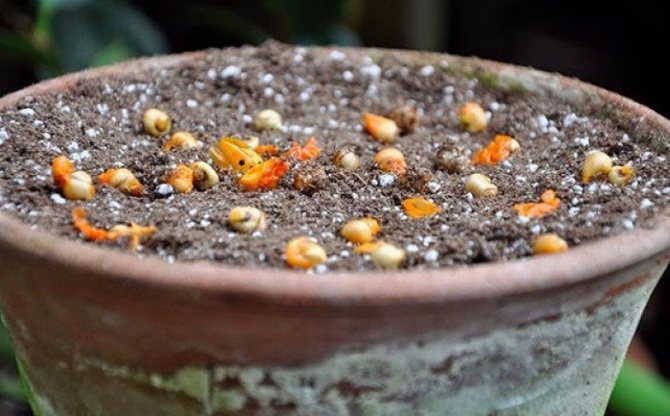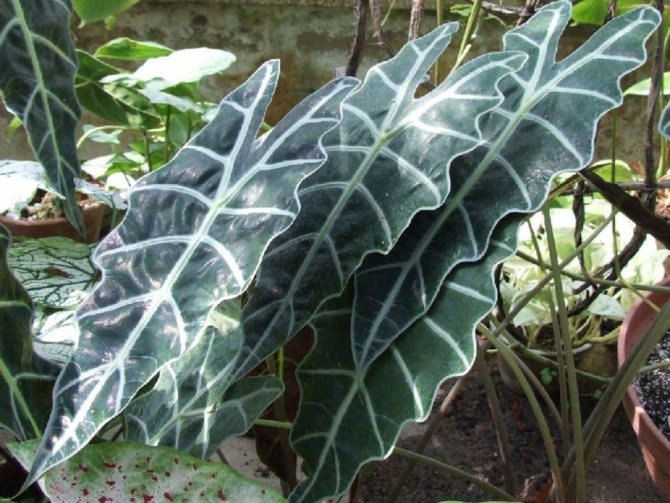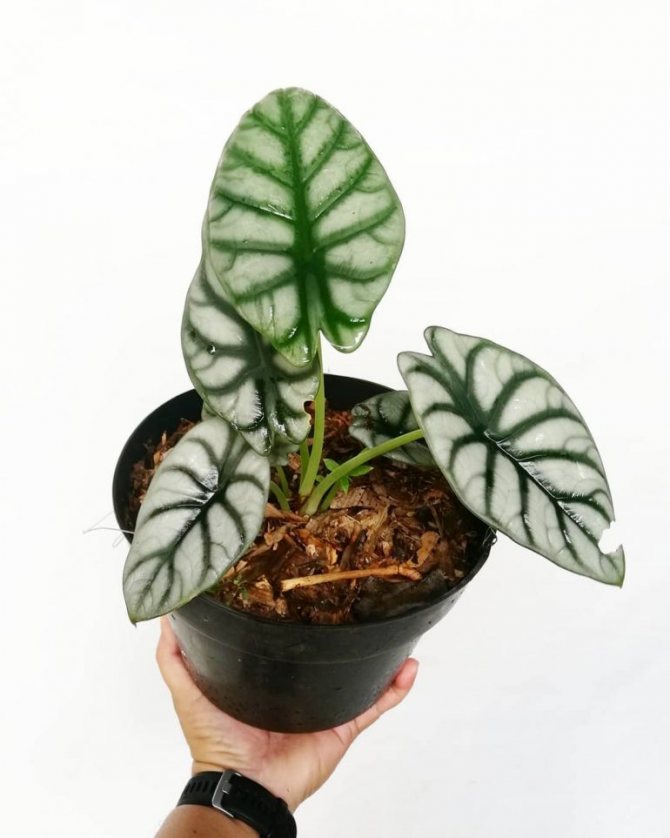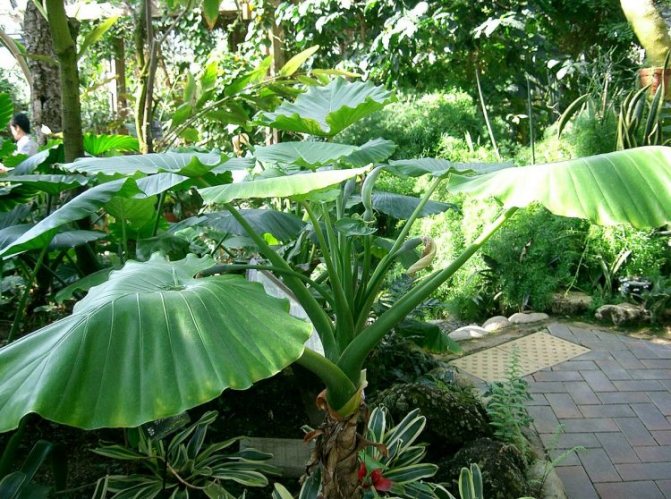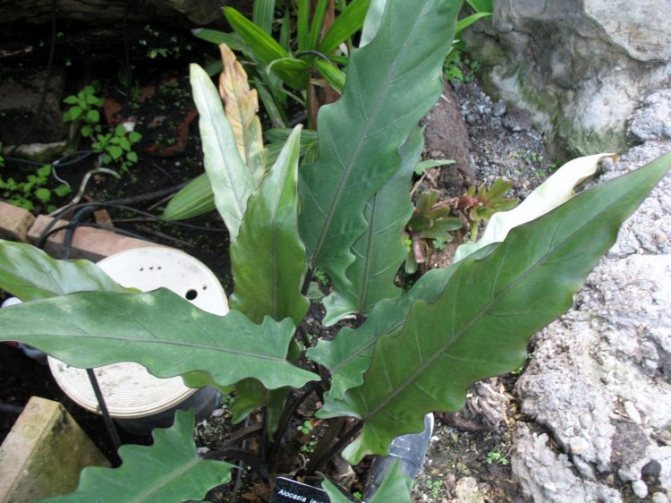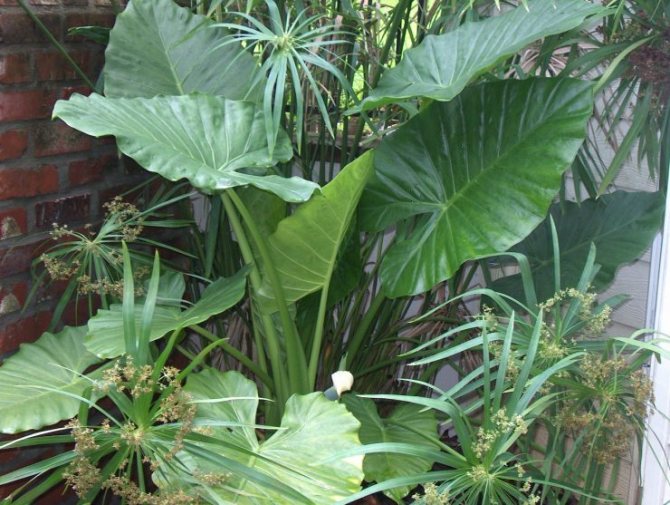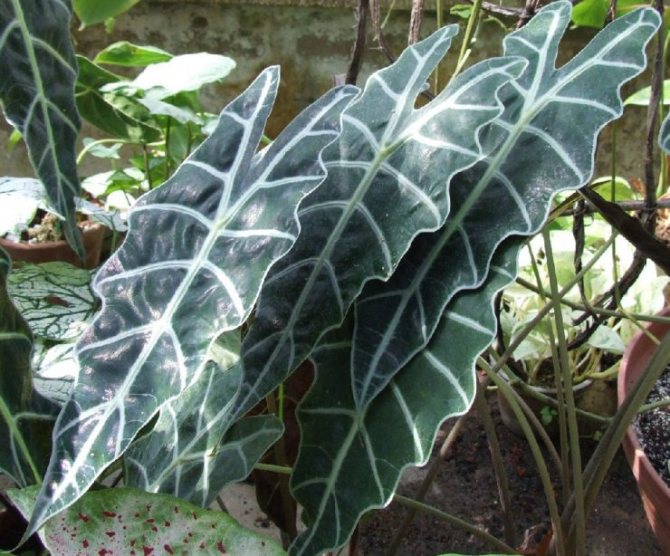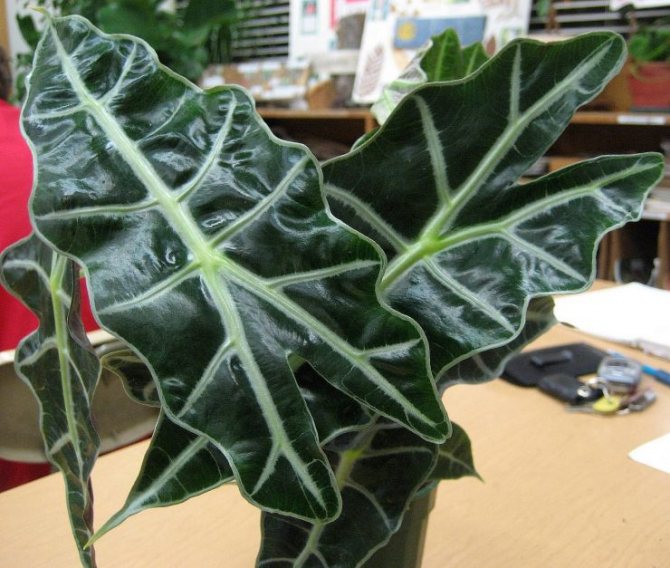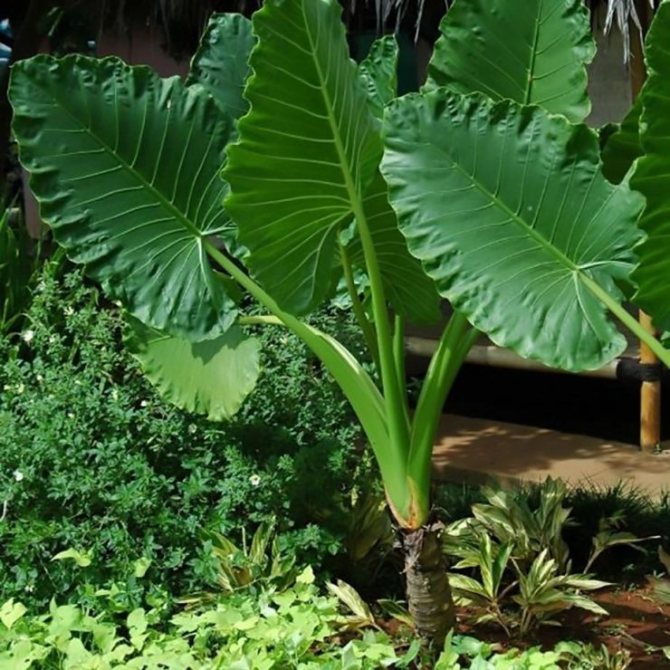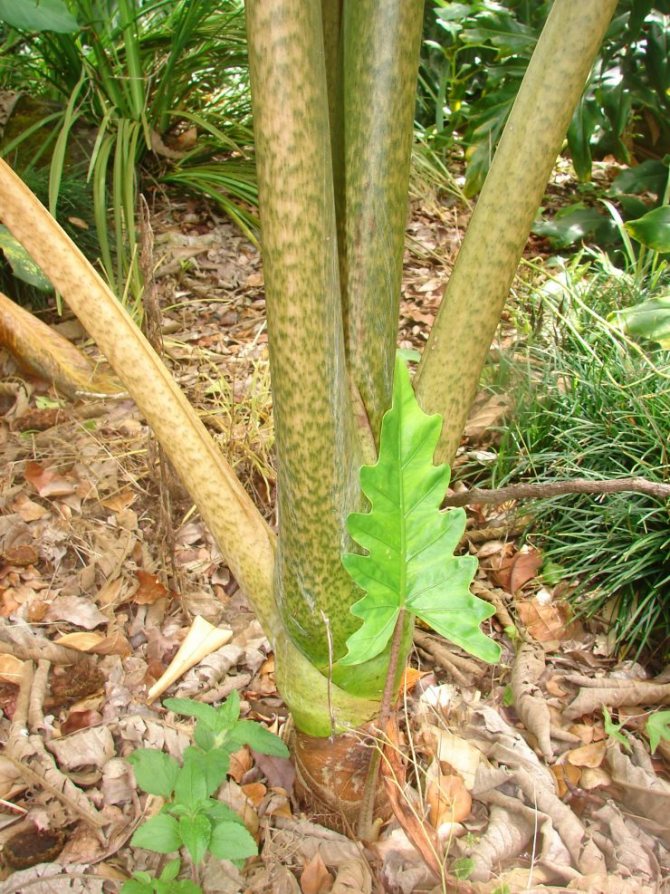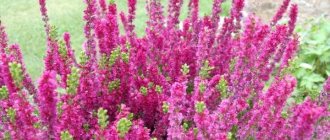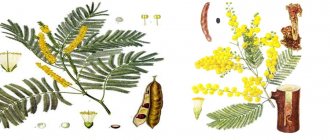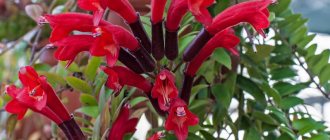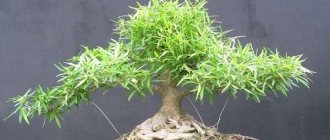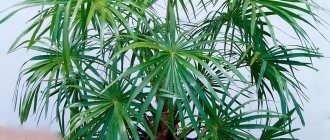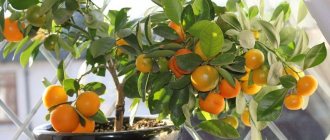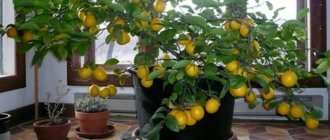Large-rhizome alocasia is an unusual plant that has many names among the people: because of the original shape of the huge leaves, it is called the elephant's ear, for the large transparent drops that protrude on them on the eve of a change in weather, the plant is called a weatherman and a mourner.
Alocasia is native to the tropical and subtropical forests of Oceania and Australia, and it is also found in parts of Asia. It is now widely used to decorate tropical gardens and parks. In Russia, the outlandish plant appeared under Catherine the Great, becoming one of the finest exhibits in her Winter Garden.
Appearance and photos
Alocasia macrorrhizos, as its name sounds in Latin, is a perennial, herbaceous, evergreen plant, sometimes reaching 2.5 meters in height. It has an upright, rather short stem and very large leaves on long petioles. The leaves are wide, arrow-shaped, with contrasting, convex veins.
What is the difference from other species?
Alokazia Arma or Indian arum, as it is also called, differs from related species primarily in size - the plant is very large, naturally reaching 3 meters in height... Another difference is the vertical stem and the vertical arrangement of the leaves on it.
This type of alocasia belongs to medicinal plants, unlike other varieties.
Chemical composition
In the official lists of medicinal plants, alocasia is listed only in some countries, where it occurs in nature, and in general its chemical composition is not sufficiently studied. It is known that all parts of this plant contain toxic substances - mercuric chloride, mercury and hydrocyanic acid.
The healing properties of alocasia are due to the content of a number of biologically active substances in it, such as:
- flavonoids (quercetin, hyperoside, licuroside);
- coumarins;
- alkaloids, one of which resembles quinine in composition.
It also contains:
- saponins;
- cardiac glycosides;
- tannins and anthracene derivatives.
Bloom
At home, alocasia blooms very rarely and this takes away a lot of vitality from the plant, but in the period from July to September there is a chance to enjoy the beauty and aroma of unusual flowers. Flowering occurs no earlier than 5-7 years of life alocasia.
Arma throws out a long, up to 30 cm peduncle with an inflorescence about the size of an adult's palm. The ear is creamy, the perianth is greenish. Under favorable conditions, a fruit is later formed in the place of the flower - an inedible bright red berry, similar to a cherry.
What does alocasia look like?
Alocasia is a herbaceous member of the Aroid family. It is an evergreen tropical flower. It occurs naturally in the moist warm forests of Ceylon, Indonesia and Malaysia. In natural conditions, when nothing interferes with the grass, and it feels comfortable, its height can reach 4 m. Domestic species are more compact, some of them grow only up to 40 cm up, but there are also those that grow up to 2 m in height. ... The width of the sheets also depends on the type - from 30 cm to 1 m.

Alocasia is an exotic plant of an unusual species
For your information! Life expectancy in indoor conditions is low, on average 3 years, in greenhouses it can comfortably exist for up to 15 years.
The growth rate of home alocasia is small, about 5 new leaves appear per year, each new one larger than the previous one. For their size, they are called "elephant ears". Sometimes in spring, alocasia blooms. Like most members of the Aroid family, the inflorescence is an ear emerging from a large perianth.
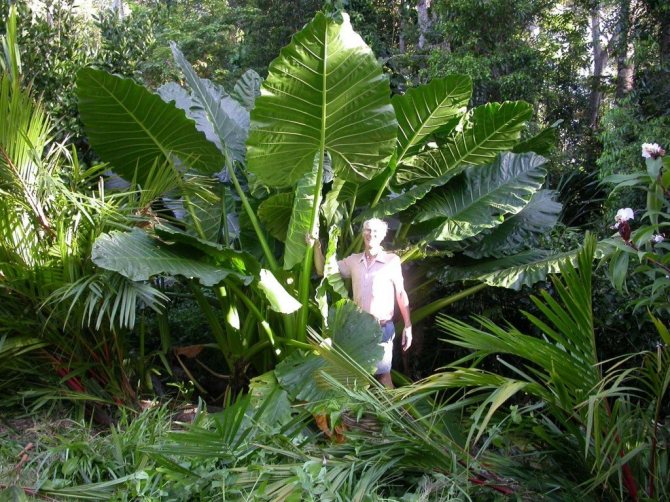

Tropical alocasia in nature
Common varieties
All types of alocasia are divided in height into large (more than 1 m) and compact (less than 1 m). The main plant varieties are described below.
Alocasia large-rhizome is a very tall and large-leaved species. Even at home, it can grow up to 5 m, while its diameter will be about 2.5 m. It will definitely require a lot of space. This variety has many hybrid varieties adapted for indoor and garden conditions. Leaves are light green monochrome, long (up to 120 cm), wide (up to half a meter) with finely toothed edges, located almost vertically.
Alokazia Black Velvet is a variety well suited for indoor cultivation. The stem is low (10 cm), the maximum length of a rounded or oval leaf is 35 cm, width is 25 cm, height is up to half a meter. The color of the decorative leaves is unusual: their lower part is painted green, and the upper part is dark green, almost black, it is velvety with a metallic sheen and bright white veins. Flowers are collected in a pink ear up to 10 cm.


Black Velvet variety
Alokazia Kalidora is a hybrid variety, reaching 2 m in height, with long (up to 1 m) and wide (up to 70 cm) leaf plates. The color is light green. The cultivar will require slightly more space to grow than other domestic varieties.
Alokazia amazon is a hybrid decorative-deciduous variety, the leaves grow on petioles of pink-green with dark strokes of color. The petioles are about 50 cm long, the leaves are very showy, thyroid-shaped with a Y-shaped cut. They are dark green with bright white streaks and wavy edges.
Note! Amazonian grows in apartments up to 60 cm, crown diameter is approximately equal to height.
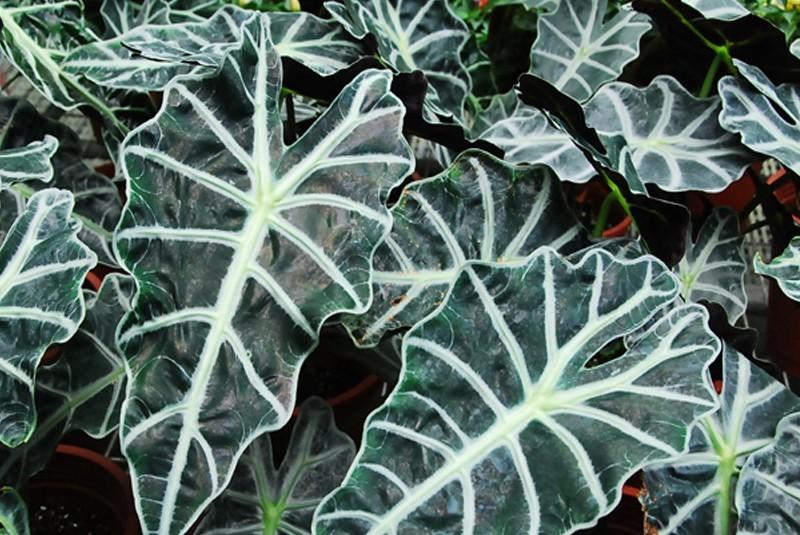

Alokazia Amazonica
Alocasia Sander is a tall species. Its height is up to 2 m, the length of the thyroid elongated dark green leaves with a glossy sheen is about 40 cm, the width is up to 15-20 cm. The leaves are outlined with a white border along the edge, the veins are also highlighted in white.
Large-rooted alocasia (thick-stemmed, Indian, Arma) is practically unpopular in Russia. Its height is up to 2 m at home, in nature - up to 5 m. Leaves are long-petiolized, large, up to 1 m, light green.
The variety Dragon (the second name is Dragon skin) is popular and textured. Its leaves are heart-shaped, pointed towards the end, of a very unusual color, reminiscent of dragon skin. The leaf plate is light green in color with a pronounced metallic sheen. The flower is less than 1 m in height, the leaves drooping due to their weight, which the cuttings cannot hold.
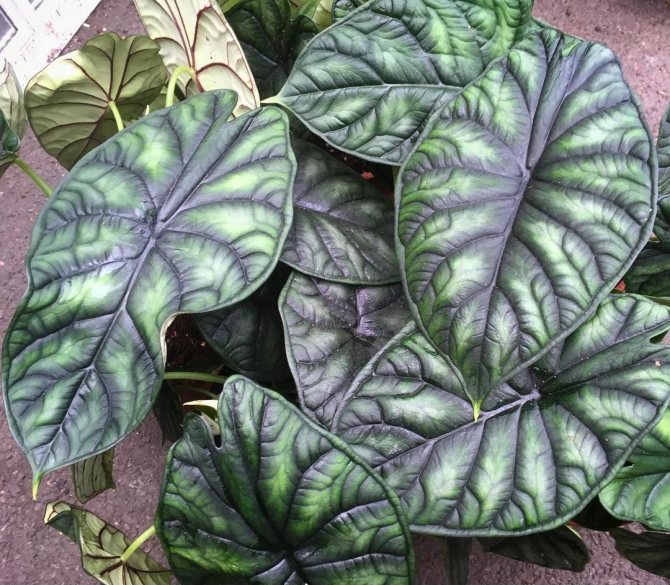

Dragon Skin Variety
Bambino is a hybrid variety of alocasia, very compact, only 40-60 cm high. Leaves are dark green narrow with white veins.
Alokazia Polly is a decorative leafy hybrid loved by flower growers. Its height is slightly more than half a meter. The stem is shortened, the leaves grow directly from the root rosette, their length is about 50 cm, width is 20 cm. The dark green glossy color with bright white veins and jagged edges looks impressive. Home care for Polly's alocasia is not very difficult, for which she attracted lovers of indoor plants.


Alocasia polly
There are many other popular varieties of alocasia: Lauterbachiana (Lauterbach, Lotherbachiana), Corazon, Sarian, Kukulata, Kupreya, Macroriza. Thanks to this variety, everyone can choose a flower to their liking and the most suitable for the interior and size of the room.
For your information! Alocasia krupnokornevischaya is listed in the Guinness Book of Records for its incredibly large leaves.
How much does an adult plant cost in a store?
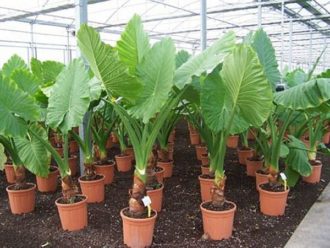

A young plant with a height of about 40 cm will cost the buyer 700-1000 rubles, a larger specimen will cost much more, the price reaches three thousand rubles.
You can buy alocasia both in online stores with delivery in Russia, and in retail chains of large metropolitan areas, for example, in the Obi, Maksidom, Orange stores.
The buyer should take into account that this plant does not tolerate freezing temperatures at all and the transportation of an exotic flower under appropriate conditions will be quite expensive.
Where to get planting material?
It is rather difficult to propagate alocasia rhizome by seed method. The fact is that seedlings growing from seeds do not retain their varietal characteristics, therefore, domestic stores practically do not offer arma seeds for sale. However, they can be bought on foreign online trading platforms, for example, and conduct an independent experiment on growing a young plant. A bag of three or four seeds is sold for 60-80 rubles with delivery to Russia.
It is much easier to get a new plant by growing from a daughter tuber, leaf or rhizome piece.
Landing
Pot selection
It should be remembered that the size to which alocasia grows depends primarily on the size of the pot. It should be wide and tall, as thick roots of arma need a lot of space.
Soil preparation
Arma is suitable for neutral acidic (pH 5.5-6) and loose soil. Water should not stagnate at the bottom, this can lead to decay of the roots. Therefore, at the bottom of the flowerpot, you need to place a drainage with a volume of at least a third of the flowerpot.
How to grow?
From seed
- Sprinkle alocasia seeds with a little damp earth, cover with glass or foil. Spray them daily and open the mini-greenhouse for ventilation. The air temperature should be at least 24-25 degrees.
- After the emergence of shoots, make a pick and repeat it after 30-40 days.
- Plant the hardened plants in small pots, a diameter of 7 cm is ideal.
- After the root system fills the entire volume of the pot, young alocasia will be ready for transplantation.
Parts of the rhizome
When transplanting an adult plant, you can carefully cut off a piece of rhizome with a bud or sprout using a sharp knife. Dry the slices with crushed charcoal and plant in a mixture of peat and sand. With sufficient temperature and humidity, the seedling will soon grow.
From the sheet
The bottom leaf of an adult alocasia can be cut, sprinkled with any rooting agent and planted in wet moss or a mixture of sand and peat. After 3-4 weeks, the plant will take root.
Daughter tuber
When transplanting an adult plant, you can choose a ripe root - it will be darker than others and covered with scales. Cut a piece out of it together with the "eye" and plant in light soil, covering with a jar.
The main methods of breeding
You can grow a new plant with the help of buds, cuttings or dividing the tubers. All methods are effective, the main thing is to follow certain rules.
When the buds are separated, the mother plant is preserved. Each of them is cut off with a small section of the trunk, and the "wounds" are sprinkled with activated crushed carbon. When planted in a moistened mixture of peat and sand, the bud quickly begins to grow.
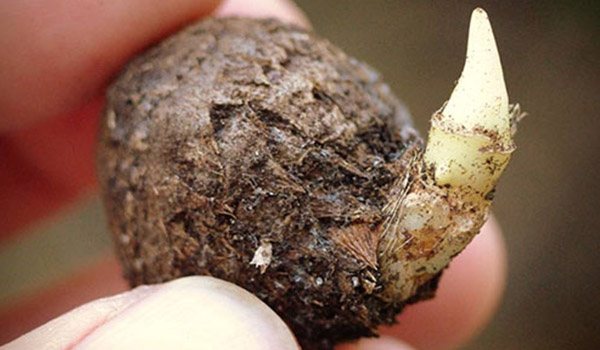

When grafting, the shoot is cut off, treated with a root growth agent and placed in a pot with a sand-peat mixture. After a month, roots will begin to appear. The stalk must be kept in a bright and very warm place.
During the spring transplant, you can cut a piece of tuber with "eyes". It is better to take a part from dark and scaly formations, it is they who are capable of reproduction.There should be a lot of sand in the soil for the tubers to live. It is recommended to cover each planting material with a jar.
Houseplant care
Temperature
The plant is gentle and thermophilic, it is recommended to keep the air temperature not lower than 25-28 degrees in summer and not lower than 17 degrees in winter.
Lighting
The light should be sufficient, but at the same time diffused. Alocasia should be protected from direct sunlight to avoid burns on the leaves. If necessary, additional artificial lighting should be provided.
Watering and fertilizing
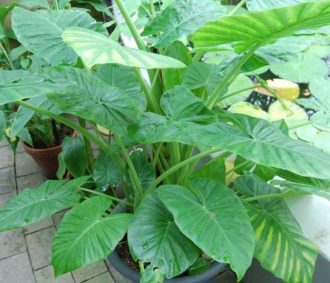

You need to water abundantly, with water at room temperature. The soil should not be allowed to dry out, as well as the stagnation of water at the bottom of the flowerpot. In summer, watering is carried out every other day, in winter 2-3 times a week, depending on the temperature and humidity.
During the growing season, and this is the period from spring to autumn, alocasia should be fed with flower fertilizers with a high potassium content every two weeks, but the concentration should be made twice as weak as recommended.
Pruning
If the bush has grown too large, it can be pruned to get a new plant at the same time.
- To do this, an incision is made on the stem at a height of 3-4 cm from the soil.
- After a few hours, a powder for root growth is rubbed into it and then covered with wet moss.
- Secure the compress with foil and keep the moss moist for 3-5 weeks.
During this time, roots should appear and alocasia can be cut off completely by transplanting it into a new pot. The old tree stump will acquire new children over time.
Transshipment
It is necessary to transplant alocasia in the first years of active growth, choosing a more spacious pot each time. If the roots began to protrude to the surface of the earth, this is a reliable signal to the owner that the flower needs a larger pot, usually every two to three years.
Flowering care
Since flowering takes a lot of energy from alocasia, unnecessary buds are cut off. During the flowering period, the plant needs abundant watering, good lighting and a constant temperature, while feeding is not done. After flowering, alocasia can shed almost all the leaves, which will subsequently grow back.
What if the buds don't appear?
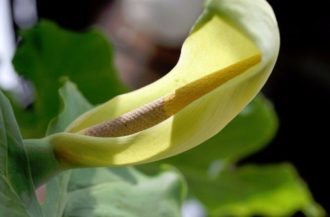

The lack of flowering in alocasia at home is a frequent phenomenon, while the plant continues to look spectacular due to its gorgeous leaves. When flowering, the bush loses most of its foliage. and it takes several months to recover.
You can achieve flowering of a finicky plant by briefly drying it out in early spring. The roots will become uncomfortable and the plant will “think” about the need to continue the genus, reacting with flowering and further seed formation.
Transfer
If the perennial looks healthy, transplanting for a young flower is required once a year, and for an adult - every 2-3 years. The most favorable time for the procedure is the beginning of spring. With regard to adult alocasia, the method of transplantation with partial replacement of the upper layer of the substrate is more often practiced.
So, we suggest that you familiarize yourself with the detailed technique for transplanting an exotic plant:
- In a prepared container of a large size (made of plastic or ceramic) pour the drainage about 1/3 of the total volume.
- Add some substrate (1 part leafy soil, 1 part humus, 1 part peat, 0.5 part sand). The soil should be slightly acidic (5.0–6.0 pH).
- Remove the flower carefully without disturbing the earth's clod. If the plant is transplanted for the first time after buying it in the store, it is better to wash off the old soil from the roots with water. At the same time, carefully examine the rhizome - get rid of the rotten areas. Treat the wounds with crushed activated carbon, then dry for about an hour.
- Dip the rhizome into the pot, being careful not to damage it.
- Pour fresh soil mixture on the sides, slightly tapping the flowerpot on a hard surface.
Important! Try not to deepen the root collar, and do not tamp the earth.
Diseases and pests
Since the juice of alocasia is poisonous, the plant is rarely affected by pests.
Spider mite
The spider mite can settle on the leaves from below. As a rule, this is a consequence of insufficient air humidity. The problem is eliminated by spraying the leaves with a mild tobacco solution or a ready-made insecticide.
Root decay due to stagnant moisture
Insufficient drainage and too much watering can cause root rot. In this case, the leaves turn yellow and dry. Transplanting the plant into the correct soil will help, while the rotten parts of the tubers need to be cut off and the cuts should be sprinkled with crushed charcoal.
Lack of nutrients in the soil
If the leaves turn pale, but do not dry, the problem is a lack of fertilizer. It is necessary to carry out top dressing with flower fertilizer for plants with decorative leaves.
What effect does a flower have?
Scientists have found that in addition to potent poisons, the plant contains many biologically active substances that have a powerful anti-inflammatory, antimicrobial and expectorant effect... In addition, alocasia juice affects the immune system and the human body as a whole, activating its defenses and stimulating the hormonal system.
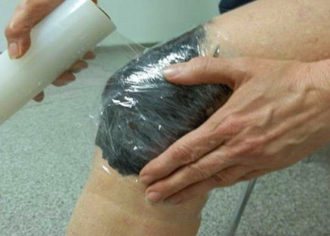

In folk medicine, alocasia is used to treat:
- diseases of the musculoskeletal system - arthritis, rheumatism, myositis, osteochondrosis, herniated disc, gout, osteoarthritis, etc.;
- skin diseases - psoriasis, rashes of various origins, including those of allergic origin;
- varicose veins and thrombophlebitis;
- fibroids, fibromas and other benign neoplasms;
- tuberculosis;
- malignant tumors.


